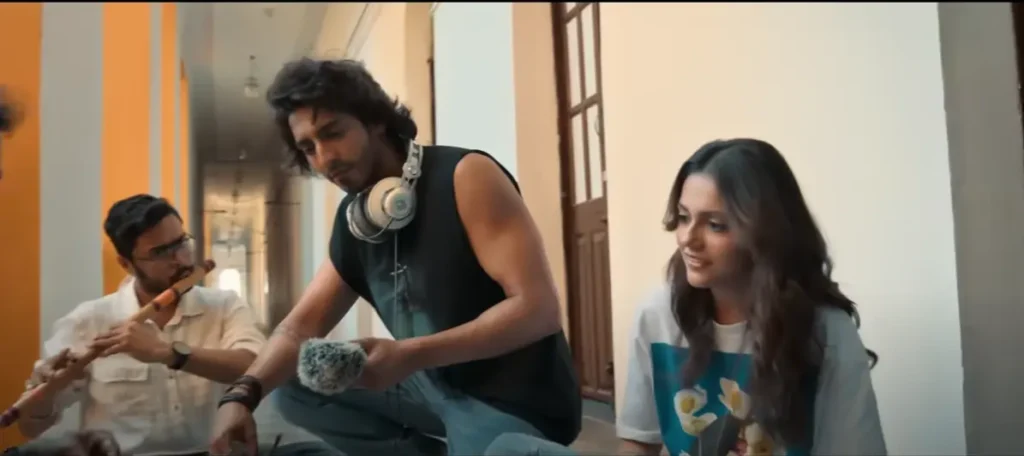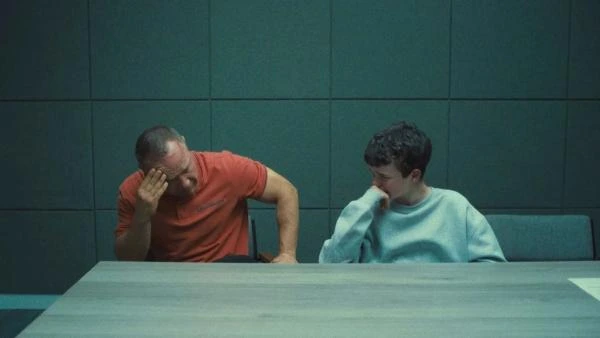Remember when love stories actually made you feel something real? Saiyaara brings back those forgotten butterflies with a tale that goes straight to your heart. Director Mohit Suri crafts a beautiful narrative around Krish and Vaani, two young souls finding each other through music and poetry.
The film opens with raw vulnerability as we meet Vaani, a talented songwriter left heartbroken at her own wedding. Her journey from despair to hope creates an emotional foundation that resonates throughout the movie. Six months later, she crosses paths with Krish, an aspiring musician with his own set of struggles and dreams.
Ahaan Panday delivers a remarkable debut performance that showcases both intensity and charm. His portrayal of Krish feels natural and unforced, bringing depth to a character that could have easily become another angry young man stereotype. The screen presence he commands suggests a promising career ahead.
Aneet Padda shines equally bright as Vaani, bringing grace and strength to her complex character. Her chemistry with Ahaan creates moments that feel genuine rather than manufactured for dramatic effect. Together, they form a pair that audiences are already rooting for beyond this single film.
The soundtrack stands as the film’s biggest triumph, featuring compositions by musical maestros like Tanishk Bagchi, Mithoon, and Sachet-Parampara. Each song serves the narrative beautifully, never feeling like a forced commercial break from the story. The title track “Saiyaara” and “Barbaad” have already become chartbusters, while “Tum Ho Toh” showcases the emotional range of the album.
Mohit Suri returns to his comfort zone with this project, proving why he remains unmatched in the romance genre. His direction feels mature and confident, avoiding the pitfalls that often trap debut films. The way he handles the sensitive themes of mental health and artistic struggle shows remarkable sensitivity.
The cinematography captures Mumbai’s essence beautifully, from rain-soaked streets to intimate recording studios. Every frame feels carefully crafted to enhance the emotional journey rather than just looking pretty. The visual storytelling complements the musical narrative seamlessly.

Yash Raj Films has delivered another winner with this production, maintaining their reputation for launching new talent successfully. The production values reflect the banner’s commitment to quality storytelling. The film’s commercial appeal doesn’t compromise its artistic integrity.
Supporting performances from Varun Badola and Alam Khan add depth to the narrative without overshadowing the newcomers. Each character serves a specific purpose in advancing the central love story. The ensemble cast creates a believable world around our protagonists.
The film tackles the theme of memory loss with remarkable sensitivity, never exploiting the condition for cheap emotional manipulation. This mature handling of serious subjects elevates Saiyaara above typical romantic dramas. The screenplay balances heartbreak with hope effectively throughout its runtime.

Box office numbers tell the success story loud and clear, with opening day collections crossing the 20-crore mark. The film has shattered records for debutant films, proving that audiences still crave authentic love stories. Early predictions suggest a successful theatrical run ahead.
Critics and audiences alike have praised the film’s emotional honesty and musical brilliance. Social media reactions show genuine appreciation for the newcomers’ performances and Suri’s direction. The positive word-of-mouth is driving additional footfalls beyond the initial surge.
The film’s success challenges current industry trends that favor action spectacles over intimate storytelling. Saiyaara proves that well-crafted emotions can still draw audiences to theaters in large numbers. This victory belongs to everyone who believes in the power of pure cinema.
Technical aspects like editing and sound design support the narrative effectively without drawing unnecessary attention. The film’s pacing allows emotions to breathe while maintaining engagement throughout its 156-minute runtime. Every technical choice serves the story’s emotional core.

The marketing strategy focused on music and authentic emotions rather than manufactured hype. This approach has clearly resonated with audiences who appreciate genuine content over flashy promotions. The film’s success validates this back-to-basics marketing philosophy.
Saiyaara establishes Ahaan Panday and Aneet Padda as exciting new talents to watch in Bollywood. Their debut performances suggest bright futures ahead in the industry. Mohit Suri has successfully launched two potential stars while delivering his best work in years.















